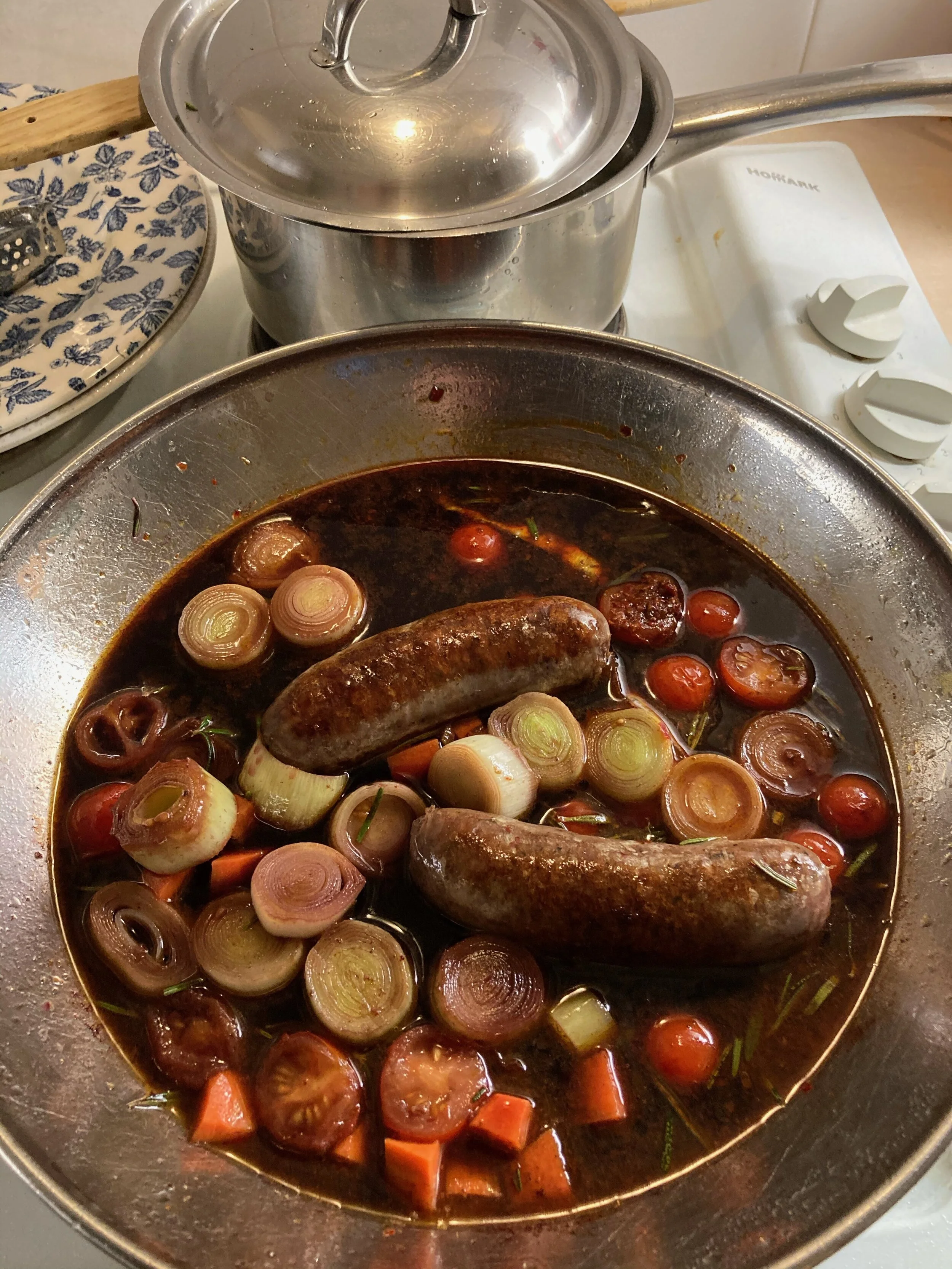Leonardo Da Vinci's Supper
Photo © Rob Jones
So, this is the way mind works - be very afraid.
I bought a Romanesco Cauliflower (Exhibit ‘A’ above) simply because I think they are marvellous. Not only are they a beautiful thing, and far too fascinating to cook, but they are a perfect example of the Fibonacci Sequence in nature.
The sequence is a mathematical progression (Start with 1, and add 1, and get 2. Add 1 and 2, get 3. Add 2 and 3 get 5, add 3 and 5 get 8. You get the idea.). The ratio between each step is called the Golden Ratio. It appears all over the place in nature, and is adored by mathematicians, architects, musicians and artists. It’s a feelgood ratio.
Leonardo Da Vinci was especially fond of it (as was J.S. Bach) and used it to get the perfect pose for the Mona Lisa. We know this because Da Vinci was always scribbling notes. Not just about poses of grinning ladies, but also shopping lists.
From the shopping lists, and a little guesswork, it’s possible to work out what Leonardo had for Supper while he was painting the Mona Lisa.
He had some general advice on eating too.
“If you want to be healthy observe this regime.
Do not eat when you have no appetite and dine lightly,
Chew well, and whatever you take into you
Should be well-cooked and of simple ingredients.
He who takes medicine is ill advised
Beware anger and avoid stuffy air.
Stay standing a while when you get up from a meal.
Make sure you do not sleep at midday.
Let your wine be mixed with water, take little at a time
Not between meals, nor on an empty stomach.
Neither delay nor prolong your visit to the toilet.
If you take exercise, let it not be too strenuous.
Do not lie with your stomach upward and your head
Downward. Be well covered at night,
And rest your head and keep your mind cheerful.
Avoid wantonness and keep to this diet.”
As for recipes we have to turn to Martino de Rossi who was described as the ‘Prince of Cooks’ and wrote Libro de Arte Coquinaria - The Art of Cooking around 1465 - about 18 years before Leonardo was born. Rossi was the Jamie Oliver of his day. His book is available on Amazon by the way, I checked.
He offered tips like ‘How to Determine Whether a Cow’s Udder Is Good.’ and ‘How to Dress a Peacock With All Its Feathers, So That When Cooked, It Appears to Be Alive and Spews Fire From Its Beak.’
Best advice ever: ‘Place fresh eggs in cold water and boil them for the time it takes you to say a Lord’s Prayer, or a little bit longer, and remove.’
I think I may invest in his book. Wonder if it’s illustrated by Da Vinci? Looking forward to trying some of his recipes.
Meanwhile - It’s Romanesco Cauliflower Cheese for tea.
RJ




